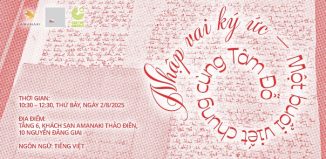Ilza Burchett – Art Book Review
To substantiate their reasoning the Authors go back in history to the aftermath of the World War II to retrace and explain the historical context and the reasons for the changes in the human psyche arriving to a peculiar state of mind called ‘meta-questioning’ (the term is credited in the book by the Authors to art critic J. Couteau), which changes, according to the Authors created the conditions for the birth of the contemporary art.
On the basis of this they argue that “…we should once more agree (in accordance with the international general definition) that the ‘contemporary’ element in an artwork is distinguished mainly on the meta-questioning mood as well the tendency to criticize, reflect, and commit in the work regarding issues of a personal, social or global nature…”
While all this might be so in broad and general terms, this “definition” could very well apply to art that is non-contemporary — for example the works of Goya; or artist like Picasso.
Just as well one can see it as rather exclusive, undemocratic and constraining to the multitude of different genres and the vast scope of contemporary art expressions and practices in the search for and the rise of new visual art forms today.
Importantly, this “definition” is a construct which relies entirely on attribution of certain qualities and “easily recognizable traits” as the Authors propose, and that is where they find themselves trying to describe and explain what is ‘contemporary art’, simply because it can not be defined outside its self-evident, self-contained, self-explanatory and self-referential definition.
They simply confuse a description with a definition.
The definition of the term ‘contemporary art’ should be left alone and free from interference and meddling with its actual self-descriptive meaning.
Concerning the attributes or features of contemporary visual art — the real strength of the visual art today is its capacity to be innovative, as it constantly absorbs and utilizes a vast amount of philosophical / theoretical, scientific and technological knowledge and constantly processes an endless stream of information of all kinds.
In fact contemporary art — or shall we better say — the visual art today does not like limitations, or for that matter reject anything per se, including the grand authority of tradition.
So, when the Authors claim that: ” The term is more or less free from theories (allergic to theories one would say). This, perhaps is different from architecture, literary criticism or philosophy, where theories regarding postmodernism, post-structuralism, and deconstruction are quite defined, and the term Postmodernism is often referred to.” — it is impossible to agree, unless the Authors believe that contemporary art should somehow come up with a theory of its own.
Contemporary art is based entirely on postmodern theory (Deleuze and Guattary, Michel Foucault, Baudrillard, The Frankfurt School, etc) and deconstructivism in the late 80’s and early 90’s (Derrida, etc).














If only every book review were this incisively written! It is scholarly, but also helpful in a practical sense. It is descriptive, but also analytic. What were the book’s authors trying to do? Did they succeed? Does it matter?
This his review is helpful to the purchaser/consumer at two levels. First, to help me decide if I want to go out and buy it. Second, to help me get the most out of the book once I own it.
It is also helpful to the authors, for their next effort, if they are open to constructive criticism. The best example is the Table of Contents being placed in the back of the book, rather than the front (where European readers expect it). This is common in VN books. It would seem a wise move to include two Tables of Contents, one at the front and one at the back, to make the book user-friendly for both domestic (VN) and foreign readers. Why go to all the trouble of translating the book into English language and then fail to format it in a way that helps people who are accustomed to the non-VN way of setting up books?
So, a review helpful to just about everyone. Who could ask for more?
Many thanks Mark — truly appreciate your assessment and feedback.
Ilsa’s review of a Vietnamese sculptor’s works, also on Hanoi Grapevine not long ago, revealed the mind and sensibility of a sharp art critic. This book review confirms them. Many thanks to you, Ilsa, and to Grapevine, for such a reading pleasure.
For me, the location of that Table of Contents is not a problem. Our habits should not be taken for granted as “should be” things. While in Hanoi, just see things the Hanoi ways. We should not complain that the grapevine here is so different from the grapevine in the Napa Valley or other places in this world. Change our habits, and we’ll be able to enjoy, even ourselves.
Why in English and not Vietnamese first? Perhaps that’s one way to get the book out safely first – the Vietnamese version might get stuck in the censorship here, or born as a child badly maimed by the Agent Orange.
One last note: the English of this book is the best of all the art books published so far by and in Viet Nam. Congratulations and many thanks to the translators.
Many thanks Trinh Lu.
Your advice is taken — one never stops learning…
Comment on Ilza Burchett’s review of “Vietnamese Contemporary Art”
Nguyen Dinh Dang
In the first section of the recent review of the monograph “Vietnamese Contemporary Art” by Bui Nhu Huong and Pham Trung, Ilza Burchett blamed the authors that they confused definition with description of contemporary art but she failed herself to give a proper definition of contemporary art as well. As a matter of fact, the paragraph she cites from Kathrin Busch is not a definition of contemporary art, but only points out some aspects (not the essence) of contemporary art such as its high saturation of theoretical knowledge, that contemporary art becomes a research or an independent form of knowledge itself, etc. But these aspects are so generic as they can be applied to Renaissance, Baroque, Classical, Impressionism arts, etc, as well. We all know that the theory of linear perspective was worked out in the treatise by Piero Della Francesca, that the paintings and drawings by Leonardo da Vinci are based on his pioneering and outstanding knowledge of human anatomy. In this sense, the “definition” by Kathrin Busch has the same quality as that by the authors of “Vietnamese Contemporary Art”. These authors have already pointed out the difficulties, which on faces when attempting to give a “definition” to contemporary art. In fact, a definition as such does not exist. What we have is just a diversity of notions.
Next, by stating that “Contemporary artists that claim or happened to have no interest, access or exposure, or do not wish to engage in any way with philosophical thought for whatever reasons, are nevertheless subject to our ‘contemporary’ world, which is infused with information of all sorts, unavoidably impacting on their work,” Ilza Burchett contradicts herself. Her statement effectively means that contemporary artists may actually not need any theoretical background or philosophical thought at all, but are nonetheless “contemporary” simply because they live and create in our time.
Contemporary art is not the postmodernism as a philosophical concept. The fact that one may have to study the mimesis theory of art by Plato and Aristotle and/or postmodern theory in art colleges does not mean that mimesis and/or postmodern theory define contemporary art[1]. According to J.F. Lyotard, “the text he (i.e. the postmodern artist) writes, the work he produces are not in principle governed by preestablished rules, and they cannot be judged according to a determining judgment, by applying familiar categories to the text or to the work. Those rules and categories are what the work of art itself are looking for. The artist and the writer, then, are working without rules in order to formulate the rules of what will have been done.”[2] In other words, postmodern art is like traffic in Hanoi, where the only rule is no rule.
Moreover, contemporary art, understood as art of our present time, is no longer postmodern either. The postmodern time has effectively been finished at the end of the Cold War (around 1990). The invention of the internet and world-wide web in 1992 – 1994, the digital age, and the new situations in the world including the collapse of the communist bloc, the fall of dictatorship and totalitarian regimes, the worldwide blossom of democracy, the war on terrorism, the rise of nationalist expansionism in East Asia, global warming, the recession of the nuclear power plants after the Fukushima disaster, etc. are just some developments, which actually turned a new page in human history. The present condition in the world forces us to deeply question our attitude we bear since the postmodern time, where truth and justice were replaced with group consesus, good performance, commodity, and profits. Artists are not exempted from this common tendency because, before being an artist, one is a human being, a citizen notwithstanding a citizen of the world, or a cosmopolitan. Once again, we see that the artistic values that the artist puts into the creation of an art work are becoming important apart from its commercial value. The reverence for the artist’s skill is growing. We see more and more appreciation for the painters, who can actually draw and paint, the sculptors who can actually sculpt, the novelists who can actually write.
10/1/2013
[1] One should be very careful in selective reading to avoid falling into the pseudoscientific nonsense written the works by the postmodern “intellectuals-geniuses” like Jean Baudrillard, Gilles Deleuze or Felix Guatarri.
[2] J.F. Lyotard, The postmodern condition: A report on knowledge (Manchester University Press, 1984).
I found at least 2 typos in my previous comment. I would like to ask you to kindly correct them, namely:
1) In the last paragraph:
group consesus -> group consensus
2) In the footnote [1]:
nonsense written the works… -> nonsense written in the works…
Thank you.
Dear Nguyễn Đình Đăng,
… I am sorry, but I do suggest you re-read my text more carefully as there is no point for me repeating what I have already said — in defense of the said…